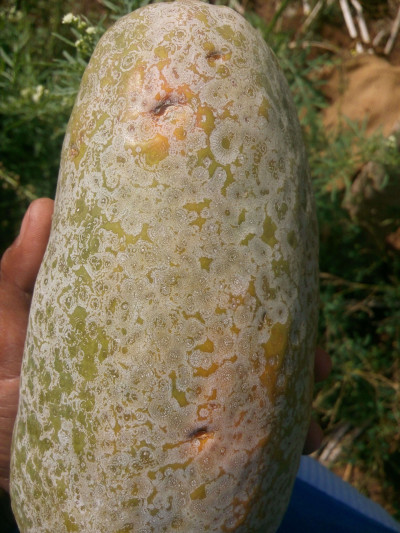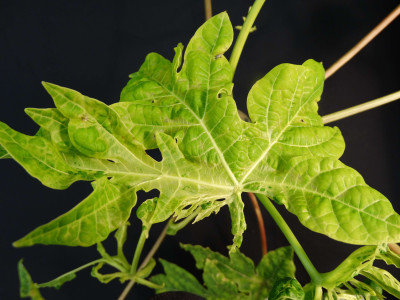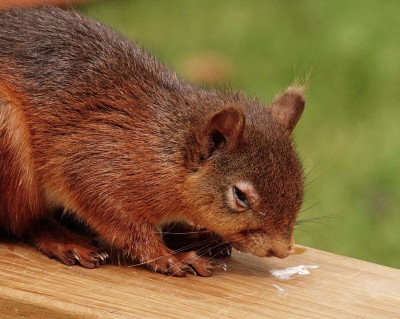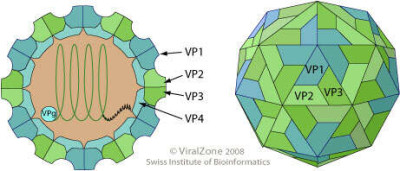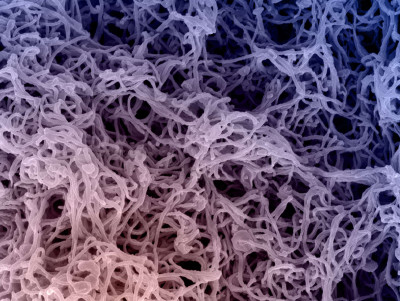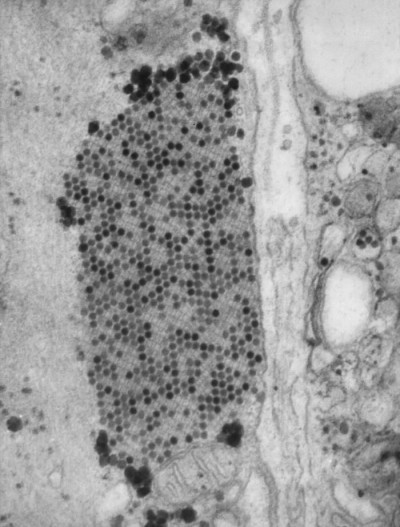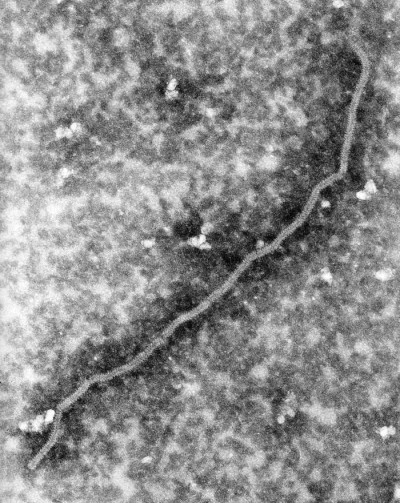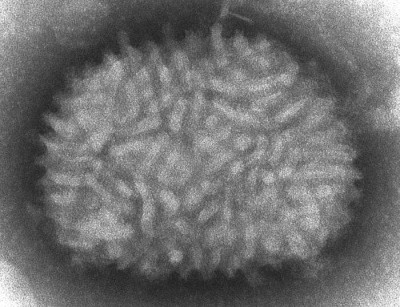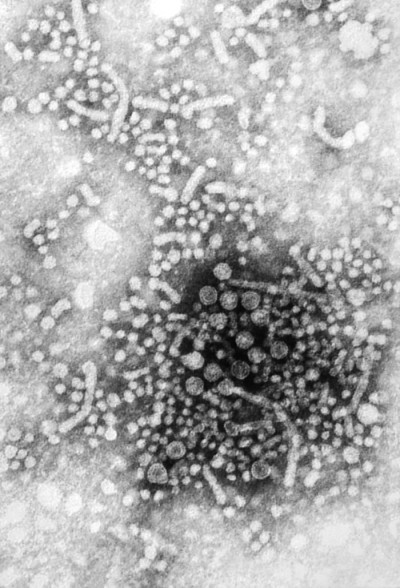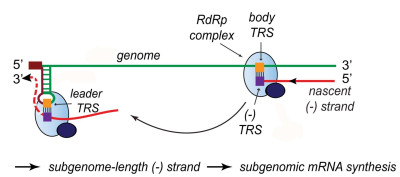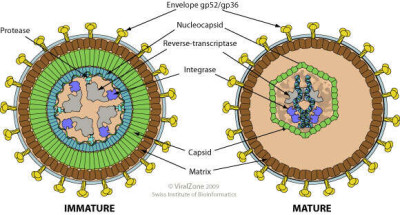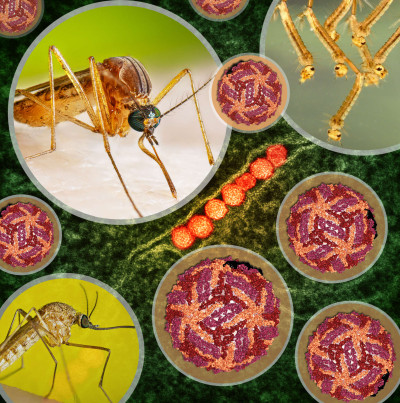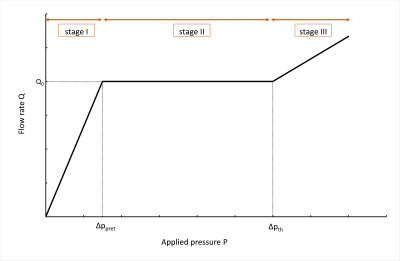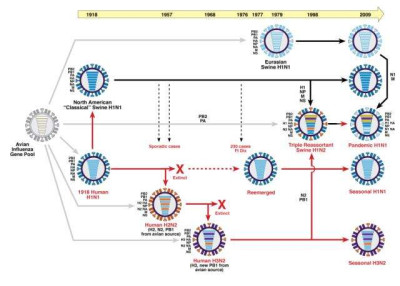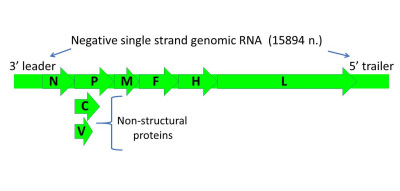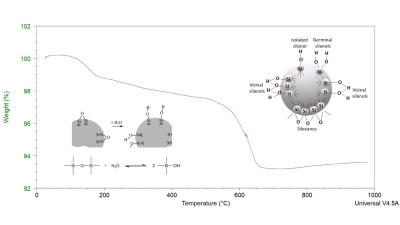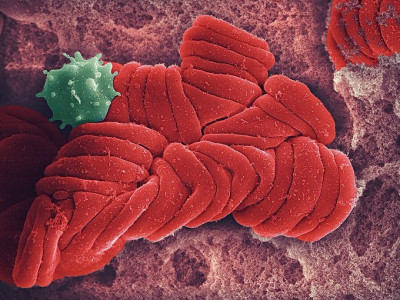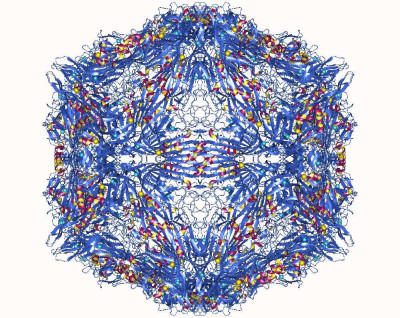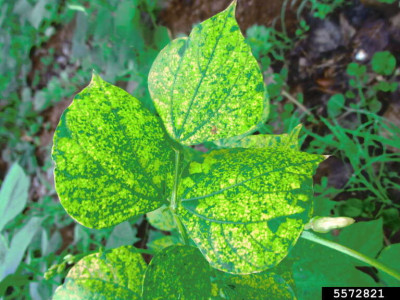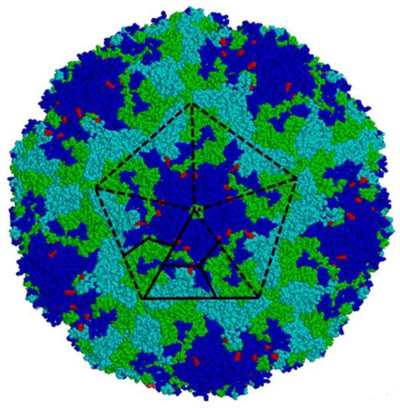Papaya ringspot virus (PRSV) The whitish color may be due to spider mites feeding injury Photograph by Khushal Solanki.
Wikimedia Commons, Plant pests and diseases
15 Mar 2024
Pathogen: Papaya ringspot virus (PRSV) Leaf symptoms include: 1. "Shoestrings" (i.e., the leaf lobes become narrow, chlorotic, deformed and stringlike) 2. "Green islands" (i.e., raised spots having a dark green color 3. Leaf deformity; reduction in leaf size.
Wikimedia Commons, Plant pests and diseases
03 Apr 2024
This picture was taken at Forest How, Eskdale, Cumbria. Previous outbreaks of squirrelpox have left squirrels with terrible scabs on eyes, mouth, nose and genitals by the time they die. In this outbreak, signs are often much harder to spot. In this squirrel, attention was drawn by extreme lethargy. The swelling above the eyes was the only visible sign. Another squirrel (post mortem confirmed presence of squirrelpox) had far less swelling around the eyes. From this stage, death would have occurred within two days.
Peter Trimming, Wikimedia Commons
22 Feb 2024
Non enveloped, icosahedral with a pseudo T=3 symmetry, about 30 nm in diameter.
ViralZone, SIB Swiss Institute of Bioinformatics, Wikimedia Commons
25 Jan 2024
Scanning electron micrograph of filamentous Ebola virus particles budding from a chronically infected VERO E6 cell, colorized in Halloween-appropriate colors.
Wikimedia Commons, NIAID
01 Apr 2024
This transmission electron micrograph (TEM) revealed the presence of coxsackie B3 virus particles, which were found withing a specimen of muscle tissue. The coxsackie B3 virus is a member of the Picornaviridae family of viruses, and the genus, Enterovirus, as is the well-known, nearly eliminated, Poliovirus.
Public Health Image Library
17 Jan 2024
Under a highly magnified view of 168,000x this transmission electron micrographic (TEM) image revealed ultrastructural details of a Nipah virus nucleocapsid, a virus which was named for the location in Malaysia where it was first isolated.
Public Health Image Library
22 Jan 2024
An electron micrograph of a Vaccinia virus. Vaccinia virus is normally confined to cattle, but is conveyed to humans through vaccination, thereby, imparting immunity to the smallpox virus.
Centers for Disease Control and Prevention's Public Health Image Library
31 Jan 2024
This negatively-stained transmission electron micrograph (TEM) revealed the presence of numerous hepatitis B virus (HBV) virions, also know as Dane particles. HBV contains a genome of DNA, and is a member of the family of viruses known as Hepadnaviridae. It is the cause of a serious disease that attacks the liver, and an infection that can be lifelong, known as cirrhosis (scarring) of the liver, liver cancer, liver failure, and death. Hepatitis B vaccine is available for all age groups to prevent hepatitis B virus infection.
Public Health Image Library
01 Feb 2024
Model for transcription in nidoviruses. Discontinuous minus-strand RNA synthesis results in a nested set of subgenome-length minus strands that serve as templates for sg mRNA synthesis. The process is also guided by a base pairing interaction between the TRS complement [(−)TRS] at the 3′ end of the nascent minus-strand and the genomic leader TRS, present in a RNA hairpin structure [1].
Wikimedia Commons, Danny D. Nedialkova, Alexander E. Gorbalenya, Eric J. Snijder
01 Feb 2024
Schematic drawing of immature and mature virion of Betaretrovirus in cross section. Enveloped, spherical to pleomorphic in shape, 80-100 nm in diameter.
ViralZone, SIB Swiss Institute of Bioinformatics, Wikimedia Commons
07 Feb 2024
Artwork featuring female Culex quinquefasciatus mosquitoes—which transmit West Nile virus (images courtesy of CDC), Culex mosquito larvae(image courtesy of CDC), a cryo-EM reconstruction of West Nile virus (courtesy of NIH 3D Print Exchange), and a transmission electron micrograph of West Nile virus particles (orange) replicating within the cytoplasm of an infected VERO E6 cell (green).
NIAID, Wikimedia Commons
08 Feb 2024
Ideal flow rate versus pressure gradient characteristic of a three-stage passive constant flow regulator.
At low pressure (Stage I), the regulator has a constant and low hydraulic resistance.
In Stage II, the flow is regulated at Q0 for a pressure gradient in the range [ΔPpret; ΔPpth].
At high pressure (Stage III), the device delivers a large flow rate.
09 Feb 2024
Genetic relationships among human and swine influenza viruses, 1918-2009. Red arrows indicate human influenza virus lineages, black arrows swine influenza virus lineages, and gray arrows exportation of one or more genes from the avian influenza A virus gene pool. Horizontal bars shown inside the virus represent each of the eight virus genes, abbreviated PB2, PB1, PA, HA, NP, NA, M and NS.
Wikimedia Commons
18 Feb 2024
Schematic representation of the measles morbillivirus (MV) genome. [1]
Olga V. Matveeva, Svetlana A. Shabalina, Wikimedia Commons
01 Mar 2024
Diatomite is a nature-made solid phase capable to irreversibly chemisorb little amounts (ca. 2wt.%) of gaseous water molecules on the own surface. Indeed, the thermal dehydration of diatomite transforms the coating layer made of silanol (Si-OH) groups in an amorphous siloxane (Si-O-Si) structure, differently an hydration process, obtained for example by thermally-activated diatomite exposition to water vapor, converts the siloxane surface layer to many types of silanol groups. Usually, chemisorption is not a reversible process, and therefore thermally-activated diatomites have a very anomalous chemical characteristics, which is unique compared to the standard behaviour of hygroscopic solid materials.
01 Jul 2024
Under 2,500x magnification, a detailed view reveals red blood cells trapped within a fibrin mesh, forming a blood clot. The fibrin strands, appearing as a delicate web, entangle the red blood cells, immobilizing them to prevent excessive bleeding. This complex structure is essential for hemostasis, where the body stops blood loss following injury. The fibrin mesh, a product of the coagulation cascade, ensures stability and strength in the developing clot. The captured image underscores the intricate balance of cellular and molecular interactions in blood clot formation, highlighting the vital role of fibrin in maintaining vascular integrity and promoting healing.
08 Jul 2024
Description: English: Penaeus stylirostris densovirus capsid homo60mer + 60 Ca (yellow) + 120 Mg (l.blue), Decapod penstyldensovirus 1.
Kaufmann, B., Rossmann, M.G., Wikimedia Commons
22 Feb 2024
Symptoms of Bean Yellow Mosaic Virus (Potyvirus BYMV).
Parthasarathy Seethapathy, Amrita School of Agricultural Sciences, Bugwood.org,Wikimedia Commons
14 Mar 2024
Enterovirus 71 (EV71) genotype A virus particle. VP1 (blue), VP2 (cyan), VP3 (green) and VP4 (yellow) proteins are presented in whole virus particle. [1]
Wikimedia Commons,Min-Yuan Chia, Wan-Yu Chung, Pai-Shan Chiang, Yeh-Sheng Chien, Mei-Shang Ho, and Min-Shi Lee
24 Jan 2024
 Encyclopedia
Encyclopedia
